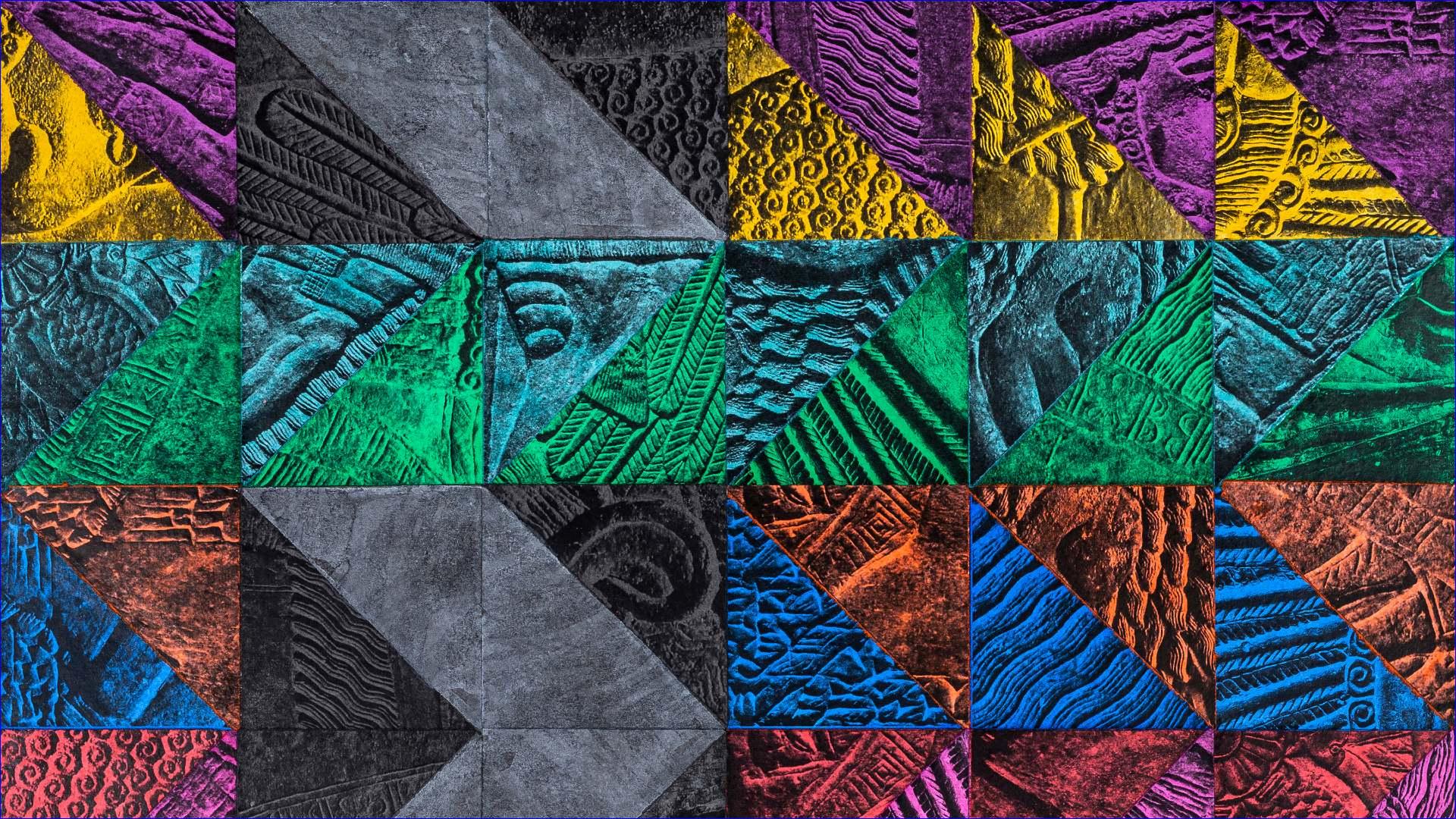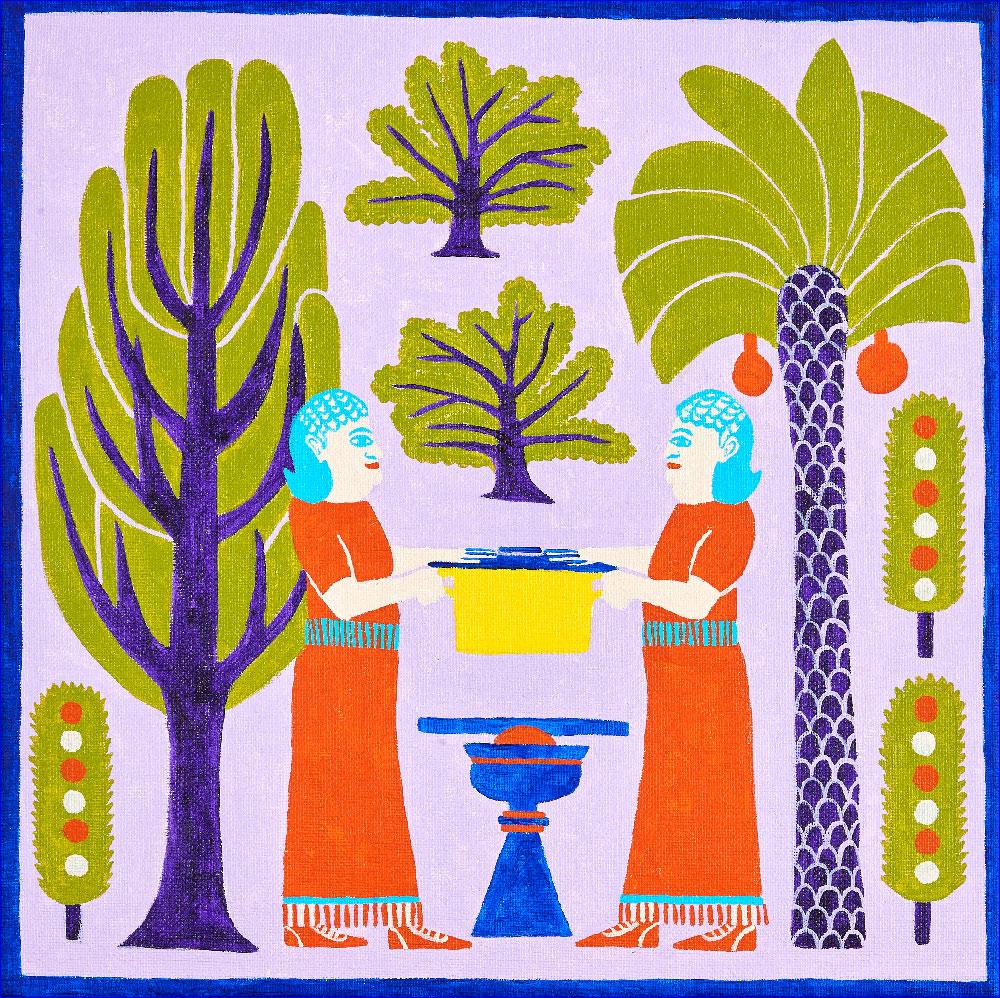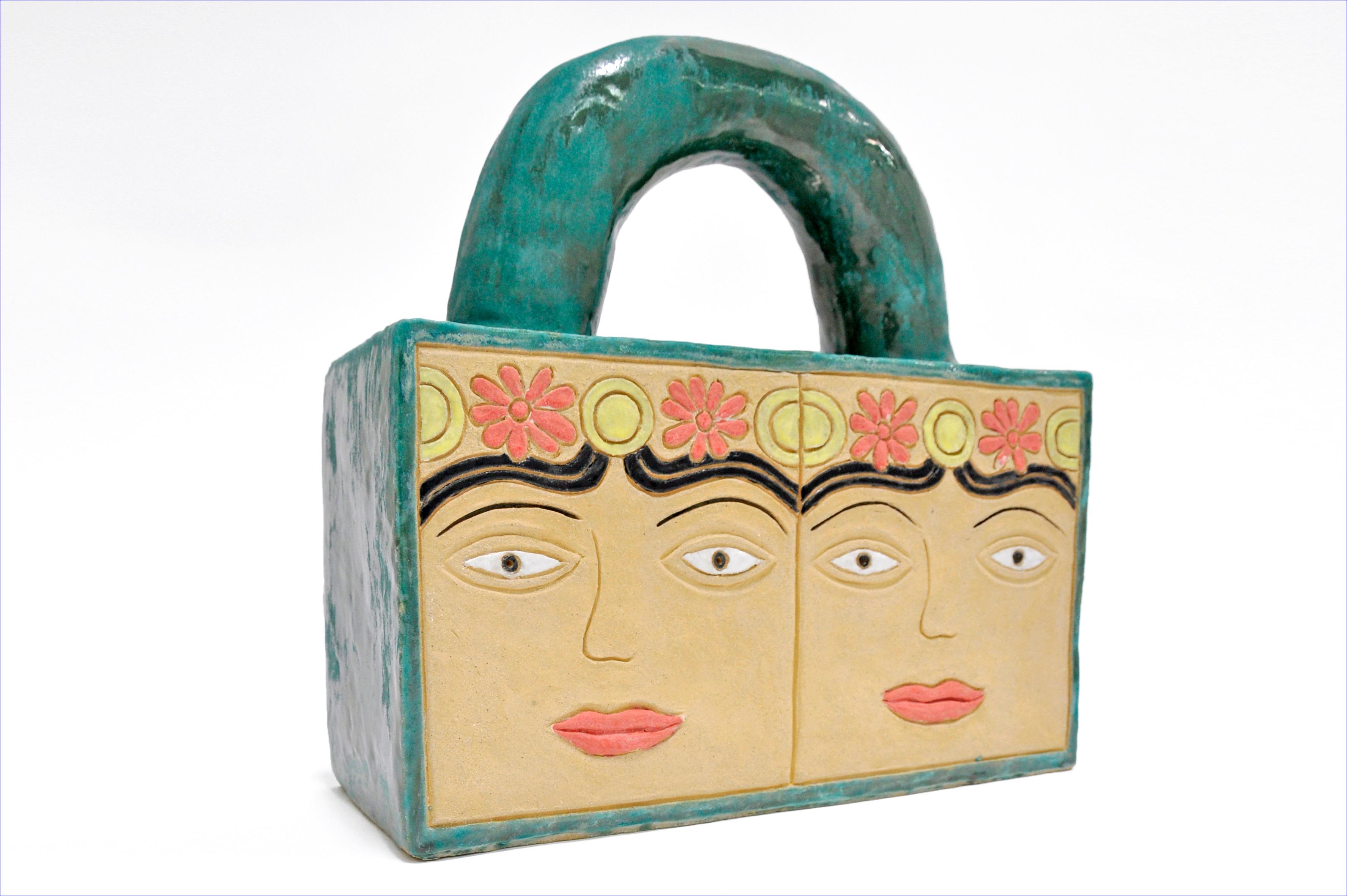


Co-curated by Nardin Sarkis and Akadina Yadegar, the inspiration for the show stemmed from the pair's frustration over the lack of representation of modern Assyrian art in public gallery spaces in the US.
"Ancient Assyrian art is frequently exhibited and celebrated, but we wanted to bring the focus to modern-day Assyrians," Sarkis told The New Arab.
Largely underrepresented in the modern narrative around the Middle East, Assyrians are the descendants of the Ancient Assyrian Empire, a Christian minority indigenous to the Mesopotamian region in the Middle East, covering modern day Iran, Iraq, Syria and Turkey.
Today, as a result of persecution and war, there is a significant global diaspora of Assyrians, largely concentrated in North America and Europe.
"Like most Middle Eastern minorities, the Assyrian culture is often forgotten or not paid attention to in popular discourse because of our community's size," explains Sarkis.
Sarkis and Yadegar hope that through the work of Diaspora in Bloom they can bring fresh perspectives of the Assyrian lived experience to a wider audience.

Accessible to all for free online through the platform Artsteps, the exhibition explores themes of diasporic identity, cultural continuity, politicisation of borders, and immigration.
It features work from a group of emerging and established Assyrian-American artists including Atra Givarkes, Esther Elia, Larsa Kena, Maryam Yousif and Rabel Betshmuel, as well as one Assyrian-Swiss artist, Shamiran Istifan.
For online audiences, Diaspora in Bloom is both immersive and interactive. After signing up online for a ticket, one is sent a detailed email package with instructions on how to navigate the online viewing room, as well as a price list for the art on sale.
However it is the smaller details that really set Diaspora in Bloom apart from the many other virtual art exhibitions that have stormed the internet since Covid-19 restrictions came in. Tickets for the show are emailed out with a DIY menu detailing recipes for dishes such as sabzi khordan, prakhe't soma, and arak and tonic from Assyrian-American recipe developer Cardamom and Tea.

Also attached is a link to a song and music video of a cover of Freydun Atturaya's Ya Nishra D'Tkhome by Sarah Thomas - an Assyrian folk song which the exhibition gets its name from.
These carefully thought-out touches ensure that audiences of Diaspora in Bloom around the world are able to enjoy the luxury of a gallery opening from the comfort of their own home.
On entering the site viewers are welcomed warmly by the sound of Sarkis' voice, who opens the exhibition through an introduction to Assyrian identity and culture.
The viewer is then guided through the exhibit, artist by artist, and introduced to the works in a way that feels intimate, replicating the experience of a private tour in a physical gallery in some ways.

The works on show range from Esther Elia's colourful pop art inspired acrylic on canvas paintings of everyday items and symbols inspired by Assyrian culture, to Atra Givarkes' poetic exploration of her roots through the Assyrian alphabet.
Collectively the show succeeds in making political statements on queer identity, immigration and xenophobia in a playful and dynamic way.
Rabel Betshmuel, whose series of stunning tapestry-like compositional grids are inspired by a quilt his paternal grandmother made for him, cites his Assyrian heritage as the foundation of his artistic curiosity and expression.
"The reality of Assyrian existence is that it's filled with pain and suffering that ultimately inspires achievement. In short, my work seeks to renew and re-invent our ancient and modern culture and discover newness through art making," he told The New Arab.
Digitalisation and the futility of borders
Diaspora in Bloom had planned a physical exhibition for 2020 after the success of their debut show last year that took place at the Art Ark Gallery in downtown San Jose's SoFa district in California, but went virtual in the face of Covid-19 restrictions.
Instead of looking at the lockdown restrictions as barriers to their goal, Sarkis and Yadegar used them as inspiration.
Transcending the borders of a physical gallery into a digital viewing room runs parallel to the experience of statelessness that makes up such a vital part of the Assyrian identity.
In practical terms, the virtual nature of the exhibition also allowed for more visitors from around the globe and gave the curators more creativity and freedom in the setup.
"The virtual gallery is sitting on an island and contains two gardens, something we couldn't have pulled off in real life," Sarkis said.
For Betshmuel, whose work was featured at the physical exhibition last year as well as the virtual rendition, the experience of a digital show in the face of current global happenings was a novel one, but lacked some of the intimacy of a physical show.
"I miss the face-to-face interactions. I met so many wonderful people last year in person. The digital experience was great, however nothing beats seeing art in person, especially when the work in so full of detail," he said.
Despite this, the response to the exhibition from the Assyrian community and beyond has been encouraging and has created a safe space for like minded people.
"Part of that is due to the progressive nature of the show. We don't shy away from queer art, feminist art, sensual art - all while being unmistakably Assyrian."
Diaspora in Bloom: Transcending Borders Through Assyrian Art also succeeds in educating those who may not be aware of Assyrian culture, customs and history, and makes for a fun, educational experience.
The show will be online until the end of this year to view via this link.

or register to post a comment.